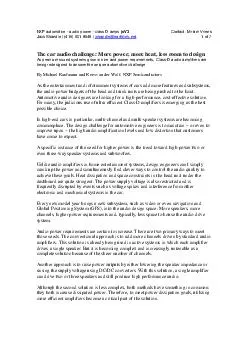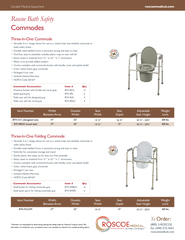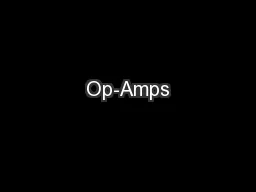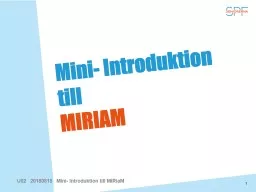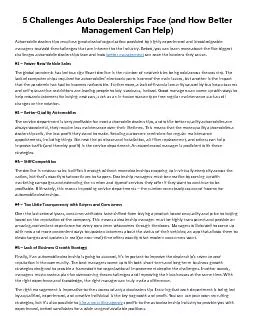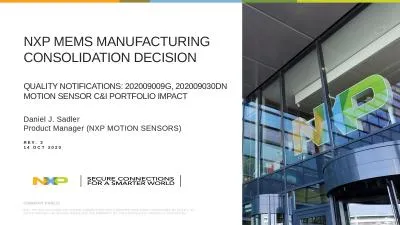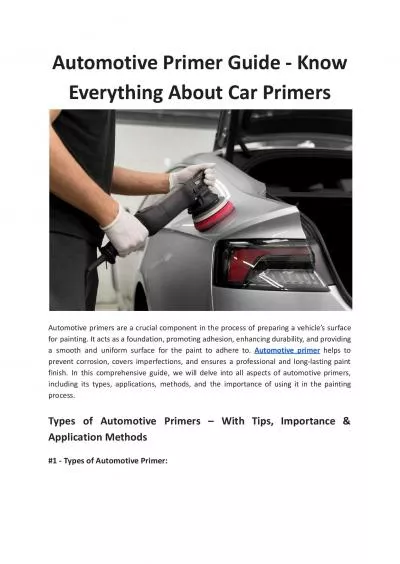PDF-NXP automotive audio power class D amps jsV Contact Miriam Vriens Jack Shandle
Author : luanne-stotts | Published Date : 2014-11-19
net 1 of 7 The car audio challenge More power more heat les s room to design As premium sound systems grow in size and power req uirements ClassD audio amplifiers
Presentation Embed Code
Download Presentation
Download Presentation The PPT/PDF document "NXP automotive audio power class D amp..." is the property of its rightful owner. Permission is granted to download and print the materials on this website for personal, non-commercial use only, and to display it on your personal computer provided you do not modify the materials and that you retain all copyright notices contained in the materials. By downloading content from our website, you accept the terms of this agreement.
NXP automotive audio power class D amps jsV Contact Miriam Vriens Jack Shandle : Transcript
Download Rules Of Document
"NXP automotive audio power class D amps jsV Contact Miriam Vriens Jack Shandle "The content belongs to its owner. You may download and print it for personal use, without modification, and keep all copyright notices. By downloading, you agree to these terms.
Related Documents

